Foam rolling part 1: stretch and roll your way to mobility
Whether you are a regular walker, building up to your goal running event, or just looking to increase your exercise levels in general, it is important in any exercise regime to make time for stretching and strengthening exercises to reduce risk of injury.
Foam rolling involves rolling along the length of a muscle group, or using sustained pressure to a particular area. This is a way of using self-massage, or myofascial release, to effectively reduce adhesions between tight underlying muscles and connective tissue or fascia. It is a great means to help improve muscle flexibility and joint mobility. In addition, foam rolling increases blood flow to area, which can improve recovery of muscles and reduce delayed onset muscle soreness. It is a useful tool in training as part of your warm up or cool down, as well as after work to reduce postural tightness. There are plenty of different options for foam rollers, with varying firmness, smooth or jagged surfaces, and different lengths. Smooth, longer rollers are great as they can be used for a great variety of core and strength exercises also.
FOAM ROLLER EXERCISES
Here are some examples for mobility exercises, try rolling throughout each muscle group for 30-60 seconds, and repeat each exercise 1-2 times through. If a portion of the muscle is particularly sore you can sustain pressure to this point (but modify how much pressure you use by pushing up with your hands or other leg!). Remember to also use sustained stretches as part of your cool down and recovery for all of the big muscle groups used for running (calves, hamstrings, quads, glutes).

Calves
Roll up and down along the length of the calf muscle, you can apply downward pressure with your other foot if desired.
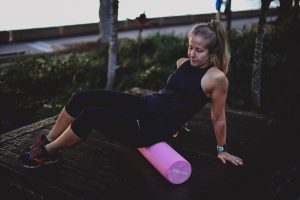 Glutes
Glutes
Sustain pressure or roll up and down or side to side. You can use the mid portion or edges of the roller.
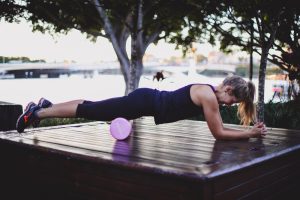 Quadriceps
Quadriceps
Roll up and down from hips to knee.
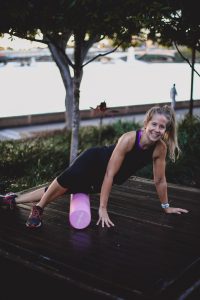 Iliotibial band
Iliotibial band
Roll from just below the bony point of the hip (greater trochanter) to just above the knee. Moderate your pressure using your hands and other foot – this one can be sore!
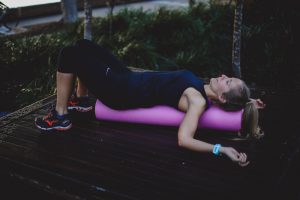 Pecs along the roller
Pecs along the roller
Sustain this stretch for 20-30 seconds. Vary your elbow position to stretch through different muscle fibres. Make sure you don’t push into any shoulder pain with this exercise.
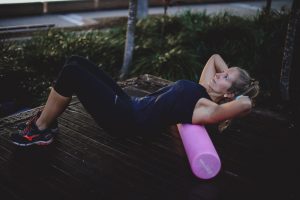 Thoracic spine extension
Thoracic spine extension
Support your head and neck with your hands, lift your bottom a little, slowly roll from the top to the bottom of the shoulder blades.
Please call or book online to see one of our Physiotherapists.
This post was written by Megan Esdale, Physiotherapist and Clinical Pilates Instructor at Stafford Physiotherapy Centre.
